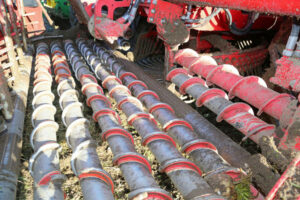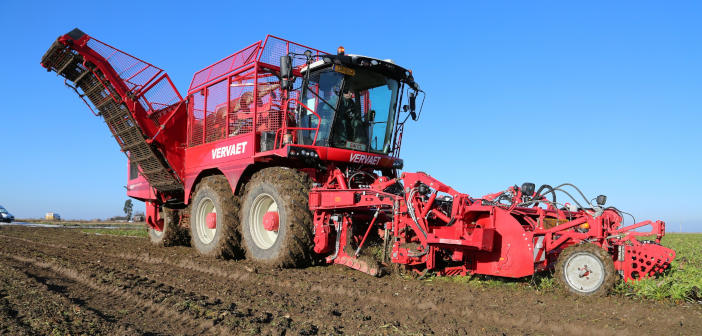J Riley Beet Harvesters (UK) Ltd, importers of the Vervaet sugar beet harvester range, has announced a new primary cleaning system. It utilises a rollerbed and will be offered as an option in place of the proven turbine-based system.
The company emphasised that this new configuration has not been developed as a replacement to the turbine system but as another option for potential customers who already operate a rollerbed due to soil types and conditions. This makes Vervaet the only harvester manufacturer to offer both options, according to the company.
Lifting is still carried out by the Vervaet rotating walking shares, with hydraulically adjustable row widths from 45cm to 50cm. The shares are arranged in a straight line for an even product flow into the cleaning system. The rollerbed is positioned in place of the front two turbines and comprises seven full-width 100mm diameter rollers. To maximise the cleaning path, the first two rollers move the beet outwards, while the subsequent rollers gather the crop to the centre for onward transport to the rear of the machine.

This configuration can be altered by substituting rollers if required, while shorter rollers on either side of the throat ensure that the crop is brought back to the centre.
Roller speed can be adjusted from the cabin to cater to different conditions, with the first six rollers operated as a group and the seventh controlled independently. The final roller can also be reversed if more aggressive cleaning action is required, counter-rotating against the preceding unit. Said to be unique on the market, the Vervaet rollerbed system discharges onto a central cleaning turbine to continue the positive cleaning action.
The rollerbed is currently available on the flagship six-wheel Vervaet Beet Eater 625, with plans to develop it for the popular four-wheel Q-series in the near future. The 625 retains six turbines, even with the rollerbed attached, a key point for contractors working against poor weather conditions and drawn out sugar beet campaigns.


